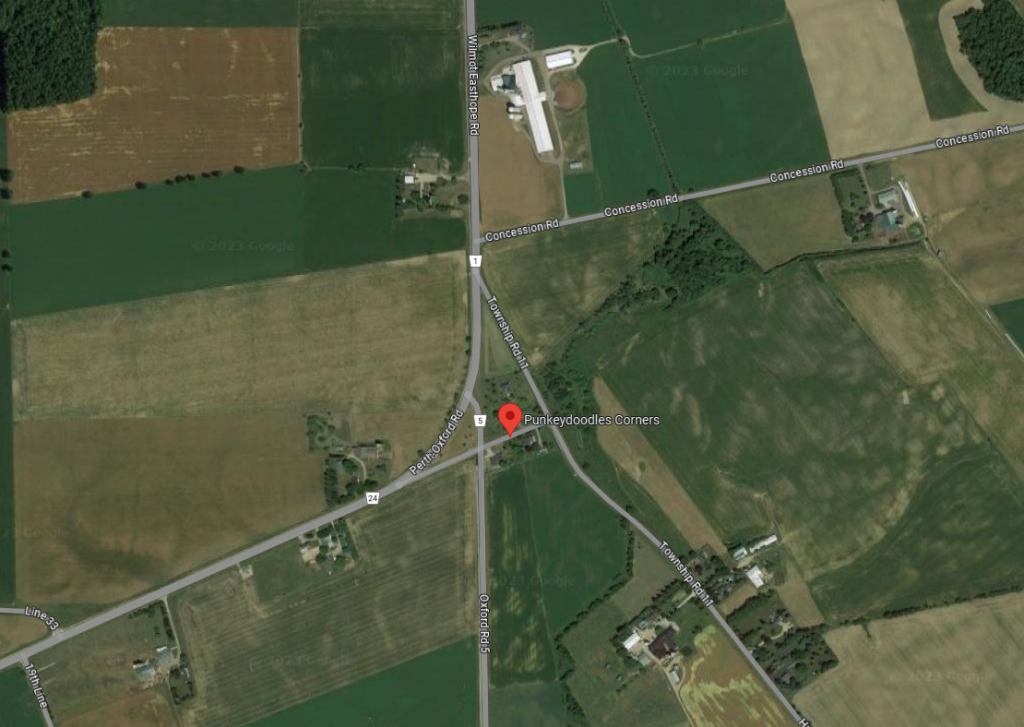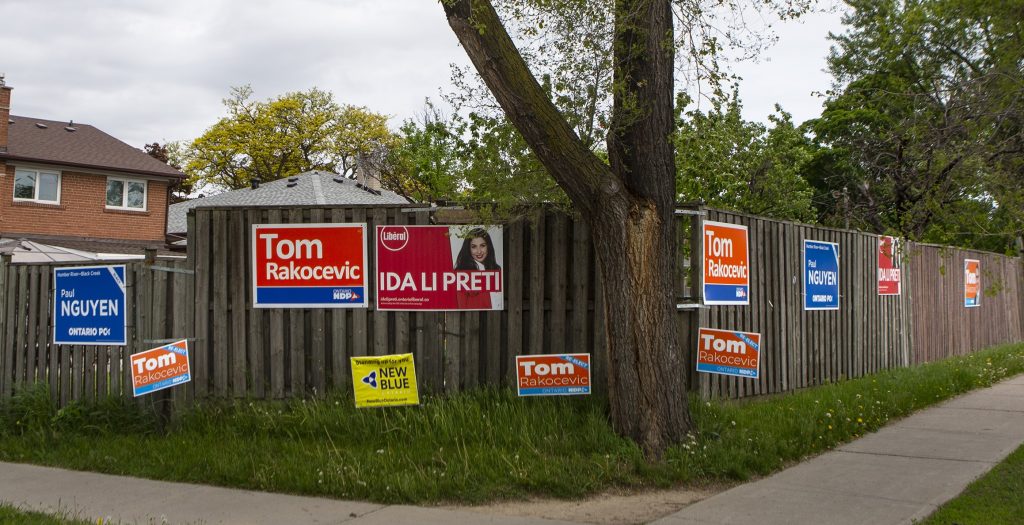Future of Punkeydoodles Corners up for discussion Thursday in Tavistock

Posted Oct 4, 2023 04:01:55 PM.
Last Updated Oct 5, 2023 03:36:04 PM.
Punkeydoodles Corners is about as weird as its name suggests.
If you don’t know it, it’s not just a single intersection but essentially six intertwined in a small area straddling both Oxford and Perth counties along with the Region of Waterloo.
It’s also where, in October 2022, 22-year-old Sadie Bender, a nurse from Wilmot, was killed in a crash, sparking a renewed push from locals who’ve been shouting safety concerns for years.
“Us as locals are seeing many more hazards, many more near-misses, and we’re just trying to lobby for change,” said Heidi Wagler, a member of the ‘Punkeydoodles Corner Committee’ formed in the aftermath of that tragic collision which also left Bender’s 16-year-old sister with life-threatening injuries.
Speaking on The Mike Farwell Show on Wednesday, Wagler did acknowledge Oxford County, which has seemingly taken the lead on the issue of late, did install a flashing stop sign at one of the intersections in the area in the wake of that crash, but suggested that, on its own, hasn’t been too effective.
“We’ve had six accidents in the past six to eight weeks–none of which have been at that corner,” Wagler said. “The accidents have happened on the curve, at the turn, in the middle of the curve–just on Friday I had a car in my garden.”
The question then, what more needs to be done? And that is the focus of a ‘Public Information Centre‘ Thursday in Tavistock, though Wagler suggests the option most-needed is one that’s already seeing push-back.
“We are adamant that we need a roundabout put in place and, at this point, it does not seem like that is [the county’s] intention,” Wagler said.
“They have mentioned it’s very costly, it would be time-consuming, it would require an environmental study, [and] it would require all of the different jurisdictions to come to an agreement–we just don’t feel that is sufficient,” she continued. “This is not one county having to pay for this, this is a shared responsibility, and I believe all the counties need to be liable for it.
Wagler went on to list a number of other options including better lighting, reflectors along the curve, added signage, and more.
She said her other main concern though is with the speed at which vehicles are travelling, suggesting the speed limit should be lowered to 70 or even 60 km/h.
“It’s posted 80 but the traffic study apparently is telling us that the average speed is going from 105 to 115 km/h through the curve [and] that is not acceptable,” Wagler said.
“We are not going to stop our fight. We can’t have another life lost.”








